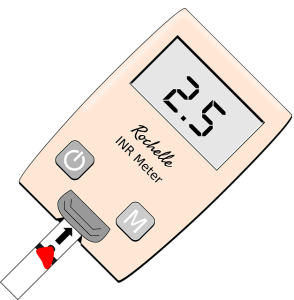-
Why your proper exercise-starting
‘warm-up’ matters!

Starting your exercise session at a conservative effort level of around 50% of your maximum is beneficial for several reasons. It helps gradually increase muscle and joint temperature, activates your nervous system in preparation for the workout, initiates light perspiration as a cooling mechanism, and mentally prepares you for the often uncomfortable experience of exercise. Most importantly, this approach reduces the risk of injury.
The key reason for me, however, starting with a relatively easy effort, especially when engaging in rhythmic and continuous activities like running, cycling, or swimming, is to prime my fat-burning metabolism. A DEXA scan indicates that I have approximately 60,000 calories of stored and usable body fat, along with around 2,000 calories of glycogen (sugar energy). I can utilise either of these fuel sources to power my endurance exercise sessions.
The harder I push myself, the more sugar I burn for energy. And, this sugar energy is limited – it will run out. However, if I stay under my aerobic threshold (approximately 140 beats per minute), I can rely more on my stored fat as fuel.
I prefer to rely on my stored fat for energy. This approach allows me to maintain my activity without feeling fatigued, reduces inflammation caused by exercise, and eliminates the need for additional fuel sources (such as sports drinks, gels, or bars), which can disrupt my gut balance. I know that by spending just a little time activating my fat stores – as in starting super easily, I almost always find I can bring home my sessions more strongly. This feels good!
It's no music, baby steps and focusing on easy breathing for the first 5 to 10 minutes of every session.
MY 'tested' HR GUIDE TO WARMING UP
💓 180 – age =
💓 If I’m currently healthy: add 3
💓 If I’m ill: minus 3
💓 If I feel fairly fit: add 3
💓 If I’m mentally cooked & tired: minus 3
💓Final HR # = ………, now, minus 15 = My highest warming up HR – which – for me is 117bpm💓
-
What would a dietitian order at McDonald's
After driving for seven hours and being detained longer than expected, I missed the chance to grab a healthy (proper) meal before leaving. Now, with tired eyes and a cranky demeanour, I spot the golden arches in the distance. A sign catches my attention: "Last food for 3 hours," complete with the McDonald's logo.
I pull in, hoping to find a parking spot right out front, but there are none, which only adds to my irritation. Finally, I find myself staring at the menu. I realise I'm at a crossroad—my dietetically educated brain is telling me that this food is junk, but if I don't eat something quickly, McDonalds will meet crampy pampy.
I remind myself to avoid simple refined sugars and unhealthy fats while looking for some fibre - good luck. I feel pretty stuck at this point, but I have to make a choice.
To McD's credit, all the food choices are clearly listed on their website, including ingredients, additives, and importantly, allergens.
Thankfully, the all-day menu is available. Let's eat!
I decided to order one Egg McMuffin, two grilled chicken snack wraps, and a water. To my surprise, I also received a McToy and a 10% off coupon for my next meal.
It's worth noting that in 2020, McDonald's removed all their salad options, citing poor sales as the reason – which – sounds fair. I wouldn't typically seek out a detox drink with chia seeds at the pub.
My choices give me some protein, a lower level of saturated fat, and bread that is lower in gluten and sugar (than other options).
While I burped for the next three hours, at least I satisfied my hunger, even if just for a little while – until I saw the next golden arches!!!!!
-
Keeping those Hammy's Loose!
Aging, sitting, and a lot of running can lead to shortened hamstrings.
Fortunately, I've always been reasonably flexible, which includes my hamstrings. However, my hamstring flexibility is naturally decreasing a bit. To maintain this flexibility, reduce the risk of injury, and counteract the increasing time spent sitting—while also alleviating back discomfort—I've established four go-to movements to loosen my hamstrings.
It's worth noting that I'm not a fan of statically holding stretches at the end range for hip flexors, as I find it causes my nerves to twitch – including my back.
However, often, your expert practitioner will quite rightly recommend fitting (static) stretches.
♠ Hip Swings - easy leg swings, holding strong posture
♣ Foam Rolling - from the pelvis insertion to the knees
♥ Bent Knee End Range - pulling the thigh up to the chest, holding for 5 seconds
♦ Foam Roller Release - sit (on roller) right on the pelvis insertions and watch footy
-
Is 'low-carb' beer really healthier?
A fun trial for a change!
Over the past 333 Pampy's posts, I have expressed my concerns about the consumption of dietary sugars. I commonly find myself encouraging the intake of more natural proteins and healthy fats before choosing carbohydrates.

Around 2005, low-carb beers started to gain popularity, being promoted as a healthier option compared to regular beer. The selling point was that less sugar equals less body fat. I certainly gave them a try—good marketing tends to attract everyone!
Now, in 2025, I'm far from convinced that low-carb beer is a healthier choice than regular beer, especially for weight management. While it may have slightly fewer carbohydrates and calories, the alcohol content in beer—not the carbohydrates—is the primary contributor to weight gain and other health issues.
I've often stated that 'most' people frequently spike their blood glucose levels with dietary carbohydrates, particularly refined sugars, and if they don't use this energy, it gets stored as body fat—sometimes quite quickly. This means that if we're drinking beer that's loaded with carbs and not dancing the night away, our weight could be at risk.
But, is the carb thing (the blood glucose effect), really a thing in ALL beer?
So, let's take a look at the glucose effect in beer.

I tested various beer choices over three days. I ate the same meals each day and exercised each morning with the same stationary bike session. I did not eat anything after midday. I tested my blood glucose every hour, ensuring my readings fell between 4.7 and 4.9 for an hour before drinking each day at 5 PM (beer'o'clock). I measured my blood glucose again 20 minutes after my second beer.
#
Beer
Alc %
Blood Glucose
1
Classic Lager
4.6
5.4
2
Contempary Ale
4.5
5.8
3
Popular low-carb
4.2
5.4
Based on my simple trial, I found that our weight and health concerns are more influenced by the calories from alcohol rather than the carbohydrate content listed at the point of sale. Alcohol contains 7 calories per gram, while carbohydrates and protein each provide 4 calories per gram, and fat contributes 9 calories per gram.
According to the calories burned versus consumed, I need to run for 35 minutes at a steady pace to burn off two beers. However, I don't really believe in counting all the calories in and out; it just feels too complicated for me! I find that eating cleanly and staying active works much better!
So, I'm to remain enjoying an old-school lager fully-loaded beer. Phew!!!!!

